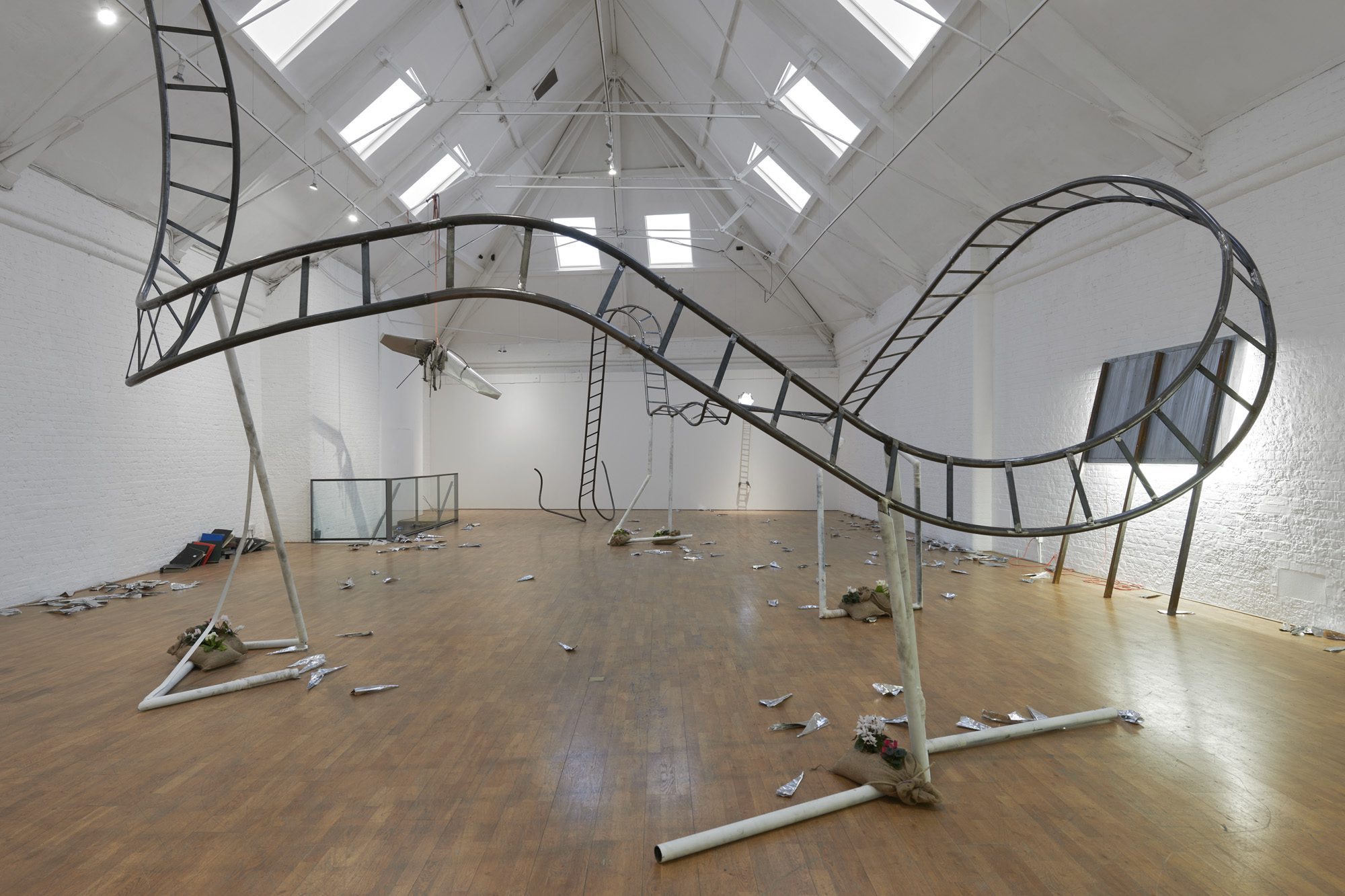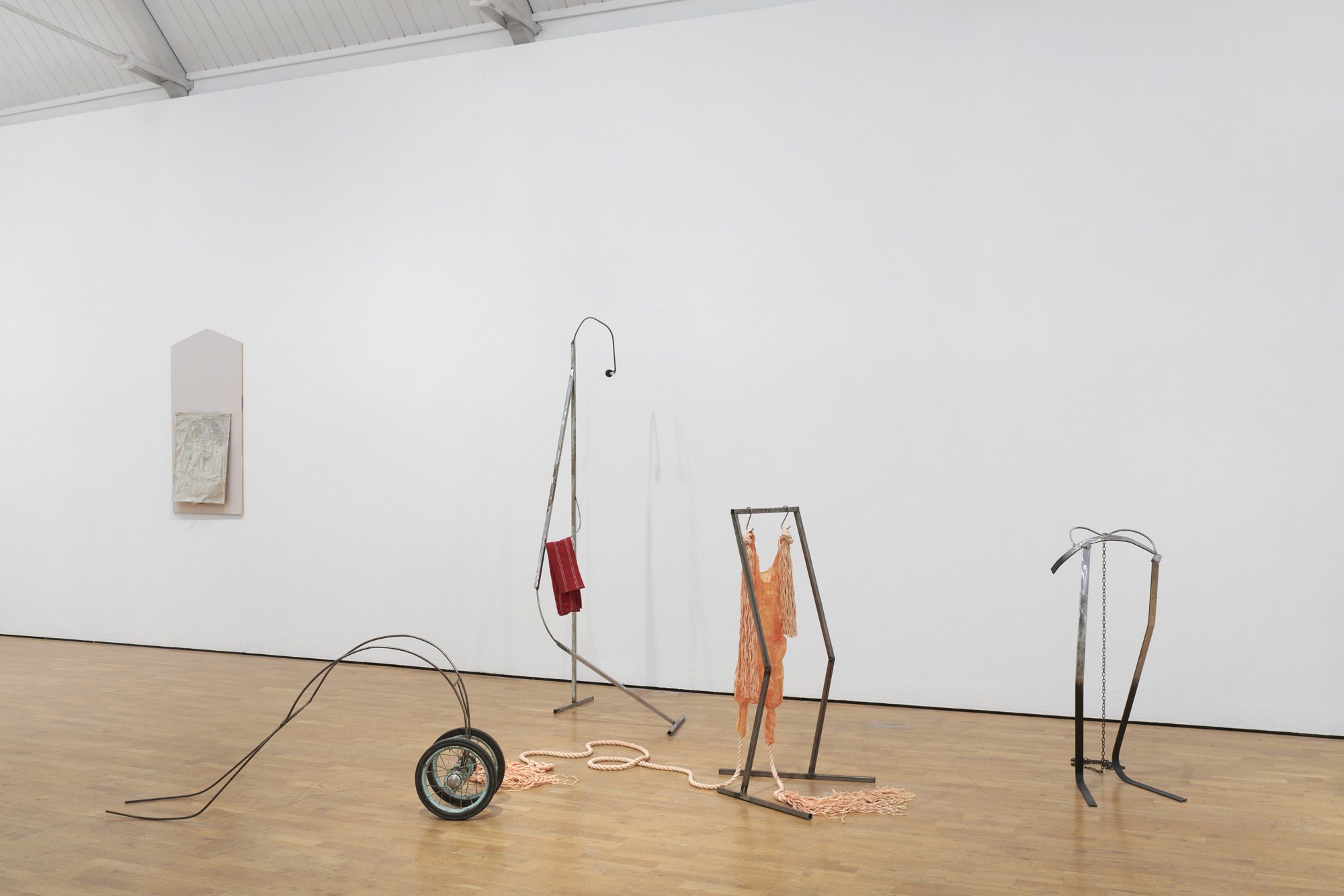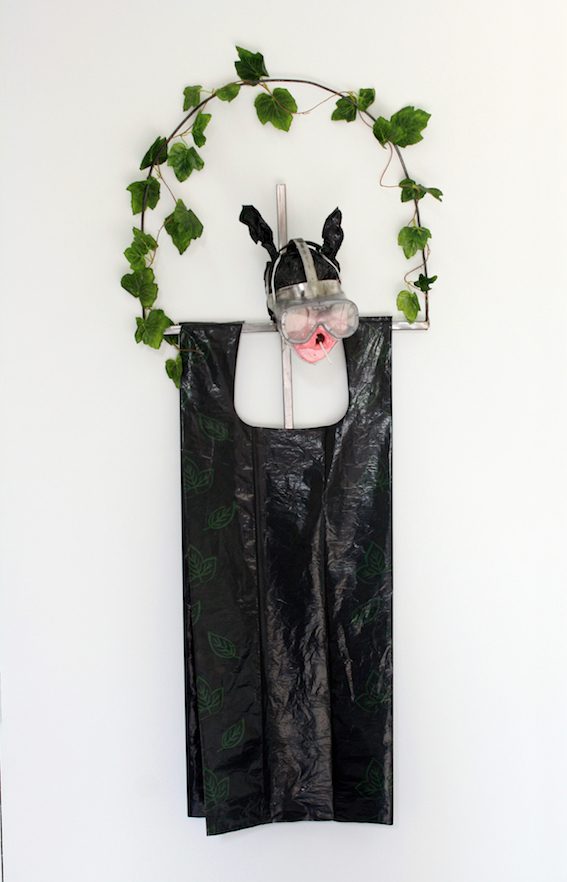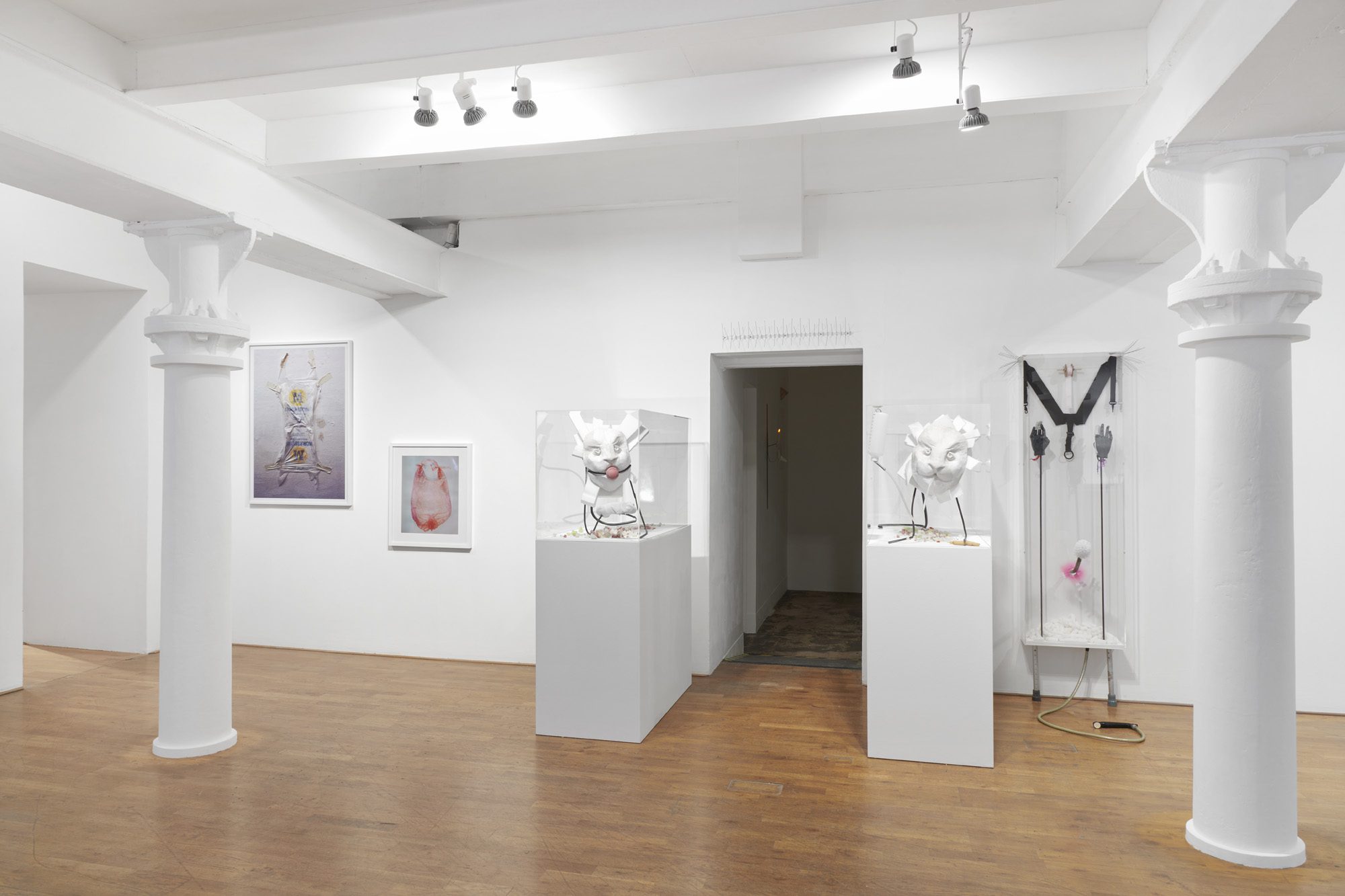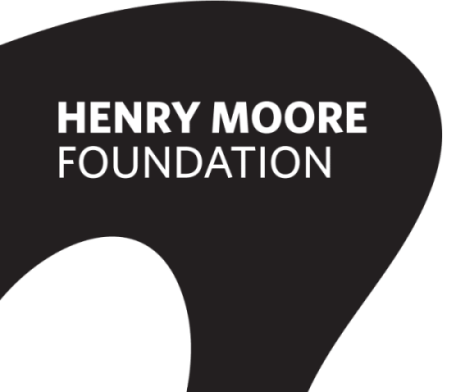This major solo exhibition by Jesse Darling (b. Oxford, lives and works in Berlin) showcases influential works by the artist from the last ten years, arranging new and existing work into themes for the first time.
Through installation, drawing, text, and sculpture, Darling works to expose how the systems of power – government, religion, ideology, technology and empire – can be as fragile and precarious as mortal bodies.
Darling questions dominant narratives about the world and our lives together by making ordinary objects appear strange. By doing this, the artist invites us to look upon materials, histories and mythologies anew, and to reflect on the mortality within everything – where impermanence is the essential condition that binds us together.
During the exhibition installation period in February 2022, artist Jesse Darling discussed No Medals No Ribbons with curator Amy Budd, resulting in the following insightful interview.
Amy Budd: Can you explain the meaning behind the exhibition title?
Jesse Darling: It’s a kind of repudiation of the whole triumphant ‘retrospective’ thing that goes along with a survey exhibition, so pretty much it is what it says on the tin. It’s also secretly in reference to a distant relative of mine whose story I somehow came across recently. As a German prisoner of WWII he started fabricating artificial legs for his injured comrades from pieces of window frames, metal chairs, cotton batting, rubber from old tires, camp scrap and anything he could get, bribing the guards with chocolate and cigarettes for stove fuel. According to local news stories he made up to 300 artificial arms and legs, some of which had complicated jointing mechanisms. When the war ended and they sought him out for recognition and decoration, he refused everyone saying that it was best to forget what had happened. His materials list looks a lot like mine though I’m not living through a war or making anything useful in this sense. And sometimes, though I think a lot about history, I think I would rather forget my own.
JD: I guess my ideas come from the same place as anyone else’s – my upbringing, my education, my age, race, class, gender, whatever’s been going on in my life or on the news at any time during my years as a person in the world. As someone who is quite clumsy and not very good at learning things I feel like I had to make up my own approach to working out the things I wanted to say – or the things that wanted to be said through me, despite me. Though I think every artist needs to do that. I start with an intuition and a set of muddled feelings without form, and then these find some kind of shape through the process. Often, I’m not sure what I’ve made until afterwards, and then sometimes I’m surprised, or disappointed. I say I’m not a conceptual artist, just an artist who thinks and sometimes reads a lot. But whatever drives my work, I can’t get that from reading a book.
JD: The honest answer is that for most of my practice I just used what was cheap or free and easy to find. There’s poetry in objects that everyone is able to recognise from their daily lives, like a shortcut to meaning. I find myself drawn ambivalently to petrochemical materials – steel and plastic, silicone. Plastic in particular is a zombie medium – bright, lurid, doesn’t really decay – and it’s made from fossil fuels, which in a certain sense can be seen as the exhumation of the ancestors. Steel is a technology of coloniality and capitalism – industry, war. These materials have produced my body, in a manner of speaking, and they tell their own stories. You could say it’s autobiographical, but my autobiography isn’t just about me – it’s a story about the enclosures act, the industrial revolution, the British empire, the transatlantic slave trade, Henry Ford, Walt Disney, the World Wars, mines and miner’s strikes, the welfare state and its dissolution, the failed sexual revolution, Margaret Thatcher, Tony Blair, the twin towers, Brexit and Covid 19.
JD: For me it’s quite a hopeful feeling to know that even empires fall, kings topple, and governments are overthrown. To know that everything has its own end, even when it seems like the reign will be endless. Vulnerability is a given, like it or not, in everybody. It’s what makes us alive. It’s not that vulnerability is in itself a strength, but the fact of our mortality, our propensity to suffer in love, in conflict, under structural violence, and our animal need for nourishment and warmth is what our species has in common. Universalism is such a melancholy white European thing but I’m attached to it because I believe in coalition and community despite everything. To acknowledge our universal vulnerability, at the level of the mortal body, is for me a way of thinking about trying to care for each other.You can also click here to download a pdf of this interview.


